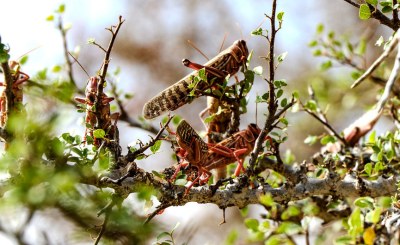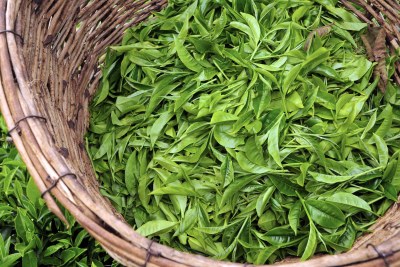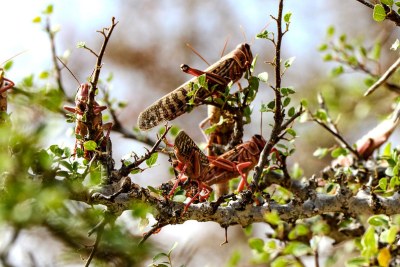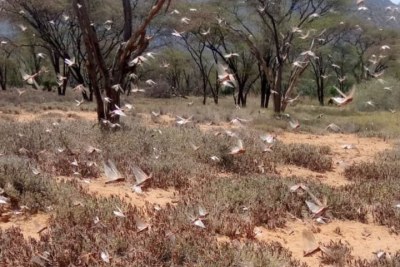-
Africa: Climate Change Fans Spread of Pests and Threatens Plants and Crops - FAO Study
FAO, 2 June 2021
Pests destroy up to 40 percent of global crops and cost $220 billion of losses Read more »
-
Africa: Pests On the March As Climate Change Fans Spread of Crop Destroyers
Thomson Reuters Foundation, 2 June 2021
Up to 40% of global crop production is lost to plant pests and diseases, says the U.N. Food and Agriculture Organization Read more »
-
Angola: Fear of Food Insecurity As Locusts Invade Angola's Southern Provinces
East African, 13 May 2021
Desert locust swarms have destroyed crops in major agricultural areas in southern Angola, raising fears of severe food insecurity as the country is also experiencing drought. Read more »
-
South Africa: Tackling Climate Change a Top Priority
SAnews.gov.za, 26 April 2021
Even as the country continues to fight the COVID-19 pandemic, tackling climate change is a national priority for South Africa. Read more »
-
Namibia: Govt Spends U.S.$1,3 Million to Fight Locusts
Namibian, 21 April 2021
The Ministry of Agriculture, Water and Land Reform has so far spent more than N$20 million on buying pesticides and equipment to contain the devastating outbreak of the African… Read more »
'Climate Change Fans Spread of Pests, Threatens Plants and Crops'
Climate change will increase the risk of pests spreading in agricultural and forestry ecosystems, especially in cooler Arctic, boreal, temperate and subtropical regions, according to a scientific review released by the Food and Agriculture Organisation (FAO). For example, a single, unusually warm winter may be enough to assist the establishment of invasive pests. FAO estimates that annually up to 40% of global crop production is lost to pests.
Each year, plant diseases cost the global economy over U.S.$220 billion, and invasive insects at least U.S.$70 billion. Some pests, like fall army worm (which feeds on a growing number of crops, including maize, sorghum, millet) and Tephritid fruit flies which damages fruit and other crops, have already spread due to warmer climes. Others, such as the desert locust, the world's most destructive migratory pest, are expected to change their migratory routes and geographical distribution because of climate change.
Documents
-
2 June 2021
Scientific Review of the Impact of Climate Change on Plant Pests
- Author:
- FAO
- Publisher:
- FAO
- Publication Date:
Climate change represents an unprecedented challenge to the world's bio-sphere and to the global community. It is a threat beyond compare to the ... see more »
InFocus
-
As part of the country's first National Climate Change Bill, passed by legislators in late April 2021, all government ministries, departments, and agencies will need to submit a ... Read more »
-
Climate change is set to ravage tea production in Kenya, the biggest global supplier of the brew, threatening the livelihoods of millions of plantation workers, a report by British ... Read more »
-
Today marks Earth Day, while humanity scrambles to prevent the cascading effects of climate change, a new global plan to turn 30% of the earth into environmental sanctuaries by ... Read more »
-
Swarms of locusts have damaged hectares of cropland in East Africa and some southern African countries including Namibia and Zimbabwe. In East Africa the desert locust swarms have ... Read more »
-
Control operations have been intensified in Samburu and Turkana counties as the government seeks to eliminate the destructive pests, which are heavily feeding on vegetation and ... Read more »

Some of the desert locusts which have invaded Gurar in Kenya's Wajir North (file photo).







